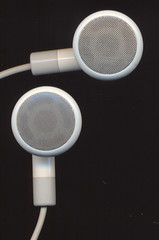
Ever wonder why all commercial gyms seem to be blasting music all the time? Well, studies have confirmed what most gym users already know. Listening to your favorite tunes can boost your capacity for exercise.
The researcher that has done work in the area of music and exercise for over 20 years is Dr Costas Karageorghis from Brunel University in Great Britain.
He recommends exercising to songs with a beat of 120 to 140 beats/minute and says his subjects have improved performance by up to 15 percent while listening to songs such as: "I Like the Way You Move" by Bodyrockers, and "Mercy", by Duffy.
Those who like music from the 80's did better listening to: "The Heat is On" by Glenn Frey, "Don't Stop Me Now" by Queen, or "Dancing Queen" by Abba.
In addition, moderate exercisers said that while listening to their favorite songs reduced their perception of hard work - although for those exercising at a higher intensities, this was not the case (notice that all the elite runners at races never race with music).
Now you realize why lots of runners listen to music while running these days.
I've even seen some tune-in during races, though that's discouraged by many events and running organizations. The reason being that you may not be aware of other runners in the race causing you or them to fall. Please be careful if you do run with music. You need to be aware of traffic if you're running outdoors and other runners around you.
Karageorghis, C et al (2008). Psychological Effects of Music Tempo during Exercise
Int J Sports Med 29: 613-619






